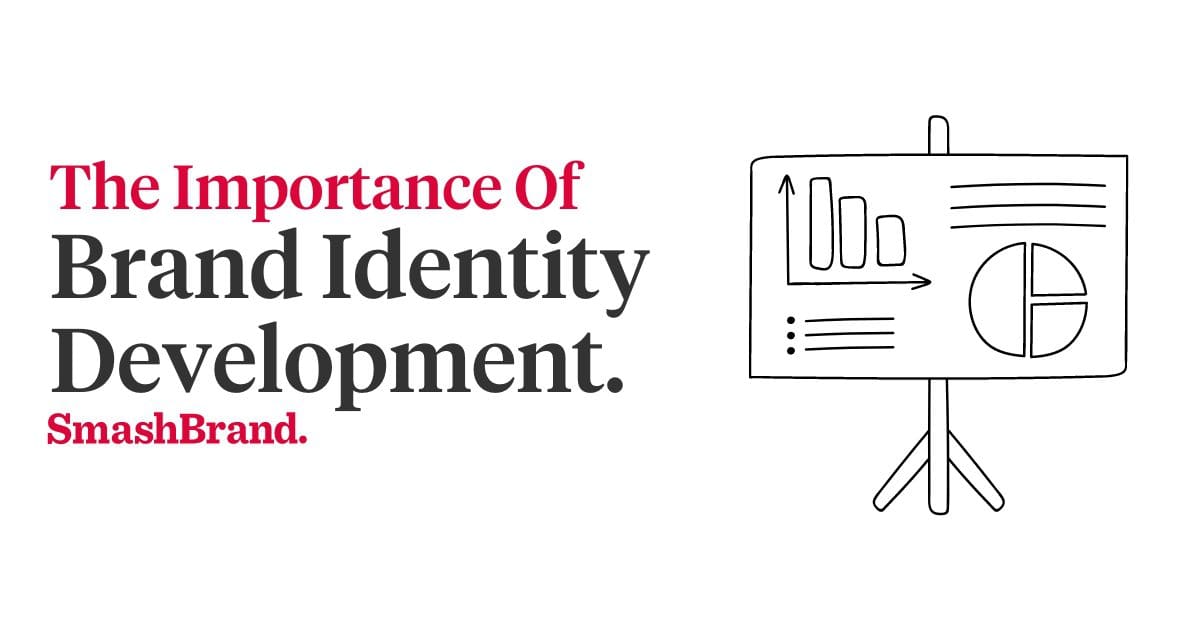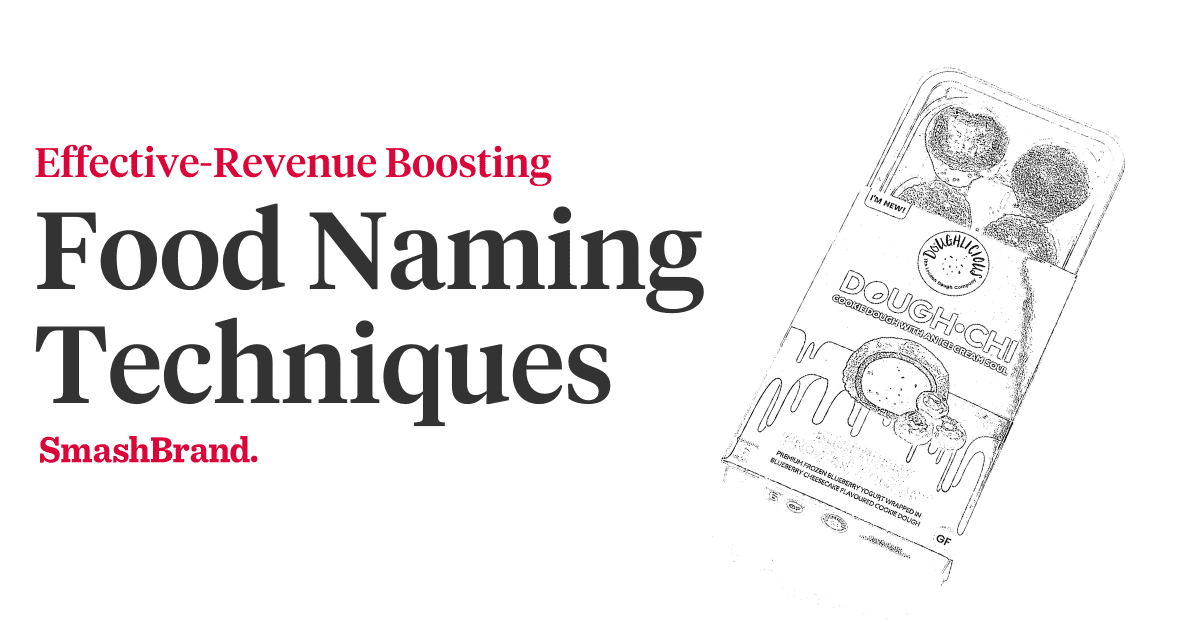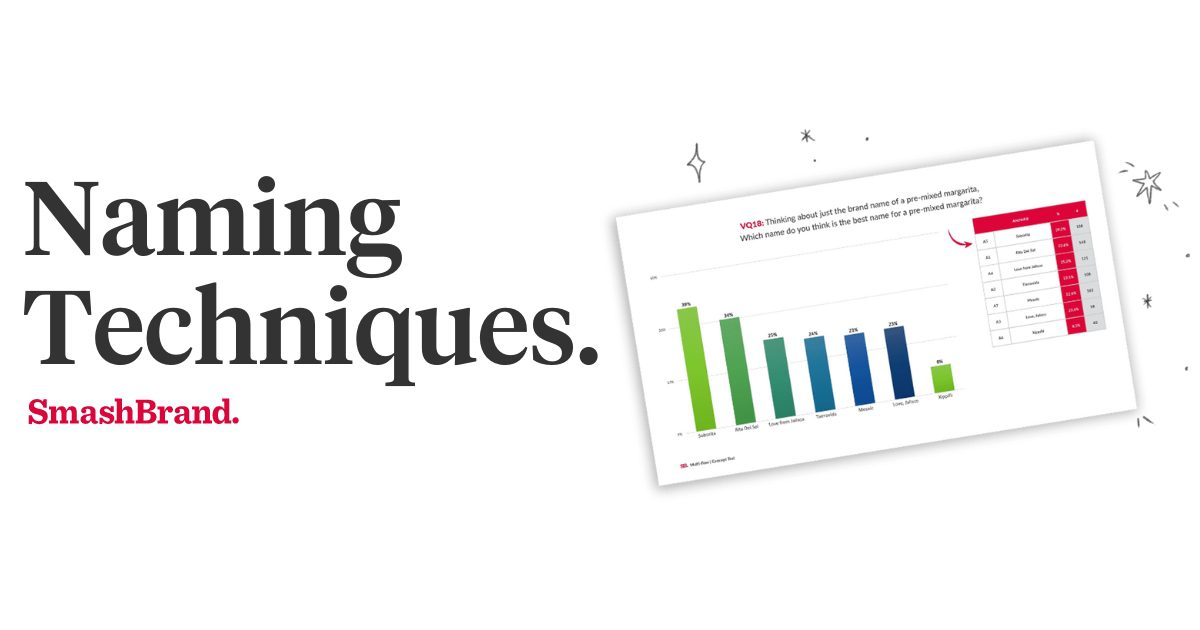With thousands of CPG companies existing in any given product category today, developing a powerful brand identity is now more critical than ever. However, creating and establishing a strong brand identity that captures brands personality and values is challenging and only when you understand each individual aspect can a brand breakthrough the noise. This comprehensive guide delves into the intricacies of CPG brand identity development, offering actionable insights and strategies to help brand owners enhance their brand image.
But first, let us define brand identity and address the widespread misconception between the concept and brand image.
What is Brand identity?
Similar to how you have personal attributes that help define you, every brand has a unique identity (whether considered or not) that distinguishes them from the rest. A personal attribute could be your smile, facial hair, complexion, or height; all these elements contribute to your identity. Brands worldwide have the same unique attributes, but instead of physical attributes, they use logos, colors, fonts, visuals, messaging voice and other aspects of brand identity design to stand out from the competition and appeal to their target audience.
Brand identity is the unique and distinctive collection of visual, verbal, and experiential elements that define a brand and distinguish it from competitors in the CPG industry. Your brand identity includes brand personality, values, and the overall perception it aims to create in the target audience’s minds. A powerful brand identity goes beyond logos, colors, and other elements we will look into. However, your identity as a CPG brand needs to capture the essence of your brand and shape the perceptions of the target audience.
Critical Components of Brand Identity (Brand Identity Design)
Brand identity design is a thorough process of creating a visual and verbal system representing distinctive characteristics, values, and brand personality. To develop a powerful brand identity, you must strategically craft elements such as logos, color palettes, typography, and other visual assets, along with verbal components like brand names and taglines. Your brand identity design helps to establish a cohesive and memorable visual language that communicates the brand’s essence to your target audience. This design process is critical to your overall brand strategy and aims to create a consistent brand image across various touchpoints, fostering brand recognition, trust, and loyalty.
Three main components make up a solid brand identity, which any small business owner must know, they are:
- Visual Components
- Verbal Components
- Experiential Components
Visual Components
These elements of your brand identity are the graphic and design components that form what your target audience can see. The visual components create a distinct and recognizable look, contributing to brand recognition and recall.
Logo
The logo is the visual centerpiece of your brand identity design, it is a symbol that communicates the brand essence and is an immediate visual identifier among competitors. A compelling logo design is memorable, scalable, and reflective of brand personality, and it often incorporates unique shapes, colors, and typography to create a distinctive mark for your target audience to recognize you easily.
Color Palette
Every CPG company has a unique color that shows and communicates brand value, personality, and story to potential customers. The chosen brand color palette should align with the brand personality and resonate with your target audience. Colors play a decisive role in evoking strong emotions and associations. For example, red and orange may evoke energy and excitement, while cool colors like blue and green may convey calmness and trust.
Typography
The style of fonts used in branding materials contributes to the overall visual identity and communicates a specific tone. Typography choices can convey characteristics such as modernity, tradition, playfulness, or sophistication. For example, brands that use Times New Roman convey authority and tradition, while Helevitca portrays simplicity and modernity, and it is mainly used in fashion. Consistent use of specific fonts across your various brand assets reinforces brand recognition and recall.
Verbal Components
The verbal components of your brand identity encompass the language and messaging associated with a brand. These elements help to express your brand’s values, personality, and critical messages.
Brand Name
Your brand name is a fundamental element of brand identity design; it is how the brand is known and referred to. A successful brand name is memorable, aligns with the brand’s values, and is easy to pronounce.
Tagline
A tagline is a succinct and memorable phrase that captures the brand’s essence and communicates a key message. Like the “Just Do It” and “I’m Lovin’ It,” your tagline is an indelible part of brand strategy that can boost brand identity and image. It is a powerful tool for conveying the brands positioning, values, or unique selling proposition. Your tagline is compelling when people can identify your brand just by the phrases you crafted for it. It is incredible how we all know the brands we referenced in this section; that is how important crafting a solid tagline is for brand identity.
Experiential Components
The tangible interactions and encounters consumers have with a brand are essential in developing a powerful brand identity. These elements shape the overall brand experience and influence perceptions.
Customer Interaction
How customers interact with your brand, both online and offline, contributes to the overall brand experience. This includes interactions through websites, mobile apps, retail spaces, and customer service channels. Consistency in these interactions reinforces the brand identity and influences consumer perception.
An example of a brand who built an identity through customer interaction is Zappos. Their unique ability to communicate with customers brought life to their name.
Packaging
Packaging is an essential representation of your brand identity for brand owners in the CPG industry. It goes beyond functional considerations and becomes a visual and tactile expression of the brand strategy. Your packaging design should align with the brand’s visual elements and convey key messages about the product and your brand.
Customer Service
How customer service is delivered reflects your brand’s commitment to its values and the overall customer experience. Consistent and positive interactions with customer service representatives contribute to building a powerful brand identity and favorable brand image, which fosters customer loyalty.
How Brand Identity Shapes Brand Image
In many cases, brand identity and brand image have been used interchangeably, often confusing readers and branding enthusiasts. Although, in some ways, identity and image can be used to explain each other in branding and marketing terms, they are two different concepts. We have explained what brand identity is, so let’s briefly look at what brand identity is to gain insight into their dynamic relationship.
Brand image is individuals, potential customers, and the public’s perception of a brand. This is what your target audience feels about your brand based on your offerings, personality, and entire brand strategy. Your brand image is a subjective and evolving representation shaped by various factors, including consumer experiences, interactions, and the overall marketplace reception of the brand.
Critical Components of Brand Image
One of the factors that contribute to your brand image is Consumer Perceptions. This is how your target audience views your brand based on their personal experiences and interactions that they have had with your brand. Your product quality and customer service are tangible ways of influencing consumer perception. The higher the quality of your product, the more positively people will view your brand.
Another contributor to Brand image is Public Reception, which tells the story of the overall sentiment and recognition the brand receives in the market. Here, the power of social media comes into play as the various channels can influence public reception.
Marketplace Reputation is another component of brand image, as it is how your brand is regarded within its industry and among your competitors. The market reputation of your brand is determined by innovation and brand positioning.
Let’s look at the differences between both concepts.
| BRAND IDENTITY | BRAND IMAGE |
| Brand identity comprises the strategic and intentional elements crafted by the brand to represent its essence, values, and personality. | Brand Image is the perception and impression held by individuals, consumers, and the public about the brand. |
| It is internally driven and originates from intentional design and strategic decisions made by the brand itself. | It is externally influenced, shaped by consumer experiences, reviews, and marketplace reception. |
| Brand identity influences brand image through intentional design and strategic decisions. | Brand image is shaped by consumer experiences, reviews, social media, and overall marketplace perception. |
| Relatively stable, evolving strategically over time while remaining grounded in core values. | Dynamic and subject to change based on external factors, consumer sentiment, and market dynamics. |
The relationship between Brand Identity and Image
Brand identity significantly influences brand image as it serves as the foundation and intentional framework that shapes how a brand wants to be perceived. When your brand strategically designs its visual elements, verbal messaging, and overall experiential elements, it aims to create a specific brand identity that will help your potential customers easily distinguish you. This identity, in turn, influences and guides consumer perceptions, experiences, and the formation of your brand image.
Here’s how your brand identity influences brand image:
Crafting a Memorable Visual Identity
Establishing a compelling brand identity is a strategic process that goes beyond visual aesthetics—it’s a powerful tool that shapes the overall perception of a brand. A distinctive and memorable visual identity, including logos, colors, and typography, sets the stage for a strong first impression. This immediate recognition contributes to a positive brand image, creating a foundation for consumer loyalty.
Aligning Values for Connection
Defining and communicating brand values through your messaging and design is another crucial aspect of brand identity. When your values align with your target audience, it establishes a connection, fostering a positive brand image associated with shared beliefs. Consistency across various touchpoints is paramount for both brand identity and brand image. Implementing brand guidelines ensures a cohesive design and messaging strategy, reinforcing reliability and professionalism in CPG companies.
Crafting a Distinct Brand Persona
Brand identity also plays a pivotal role in crafting a unique brand persona, even with the complexity of the market. Through language, tone, and imagery, your brand can create a personality that resonates with potential customers, contributing to the formation of a distinctive and memorable brand image. Additionally, the strategic use of brand identity design and messaging helps shape how the brand is perceived, influencing consumer perceptions and contributing to a favorable brand image.
Reflecting Quality and Consistency
Reflecting quality and consistency is inherent in a well-designed and cohesive brand identity. This conveys professionalism and reflects positively on the brand’s image, associating it with reliability and excellence. Moreover, a strategically crafted brand identity can elicit emotional connections by evoking emotions aligned with the brand’s personality, fostering loyalty, and creating a lasting connection with consumers.
Standing Out in a Crowded Market
Differentiation from competitors is a crucial outcome of a strong brand identity. Establishing unique visual and verbal elements helps the brand stand out in a crowded market, positively influencing how consumers perceive and remember the brand. Notably, an adaptable brand identity that responds to evolving trends without losing its core identity demonstrates relevance, positively impacting the brand image.
Building Trust Through Consistency
Ultimately, the role of brand identity goes beyond visual appeal; it is a dynamic force that, when executed strategically, builds trust and credibility. Fostering a sense of trust through consistent and authentic representation contributes to the positive brand image, making the brand not just a product or service but a meaningful and trustworthy entity in the eyes of consumers.
Why Brand Identity Development Matters
Developing a powerful brand identity is important in the current business climate in which we find ourselves. Brand identity development is the silent ambassador communicating your values, establishing trust, and distinguishing your brand in customers’ hearts. If you want to stay top of mind, put considerable effort into establishing your brand identity. Let’s explore the multifaceted reasons why investing in brand identity is beyond a choice but a strategic imperative for brand owners.
Establishing Brand Recognition and Differentiation
In a market saturated with different CPG brands in your industry, capturing consumer attention is a perpetual challenge. A powerful brand identity makes your product and brand easily recognizable and sets it apart from competitors. Potential customers can quickly identify and recall your brand amidst the noise through consistent visual elements, messaging, and brand personality.
Building Trust and Credibility with Consumers
Trust is a currency in the world of consumer goods; a powerful brand identity fosters customer loyalty by communicating authenticity, reliability, and a commitment to quality. Potential customers are more likely to choose products from brands they perceive as trustworthy, making brand identity an invaluable asset in establishing and maintaining consumers’ trust.
Influencing Consumer Purchasing Decisions
The power of perception in consumer decision-making cannot be overstated in the CPG industry. Creating a solid brand identity shapes how consumers perceive a product, influencing their purchasing decisions. A positive and consistent brand image instills confidence in consumers, nudging them towards choosing your brand over competitors.
Fostering Brand Loyalty and Advocacy
Building a solid brand identity goes beyond securing a one-time purchase; it lays the foundation for lasting relationships. When consumers connect with a brand deeply, aligning with its values and resonating with its personality, they are likely to become loyal customers and advocates. These advocates, in turn, become a powerful marketing force, amplifying your brand message to a broader audience.
How to Develop a Strong Brand Identity
Now that we understand the important role of brand identity in the CPG sector let’s delve into the actionable steps that brand owners can take to develop a robust and resonant brand identity.
Conducting a Brand Audit
Before you embark on the journey of brand identity development, it’s crucial to understand where your brand currently stands. A brand audit involves a comprehensive assessment of your current brand perception and an analysis of competitor brands. This step provides insights into areas that may need enhancement and identifies opportunities for differentiation. You can use the Brand Development Index (BDI) to analyze your brand’s performance in the market. Your BDI gives a clear perspective on the effectiveness of your brand strategy and provides insights to improve it.
Defining Brand Values and Mission
The foundation of a compelling brand identity lies in its values and mission, so you need to identify the core values that resonate with your target audience and craft a clear and compelling brand mission statement. Create an effective value brand proposition by following the steps highlighted in this article. These elements will serve as guiding principles, shaping your brand’s identity and its trajectory in the market.
Creating a Unique Brand Personality
Your brand’s personality differentiates you in the minds of consumers; this means you must define the traits that embody your brand and align them with the preferences of your target market. Whether it’s friendliness, innovation, or reliability, a distinct brand personality creates a memorable and relatable brand image. It is important that the brand personality matches your brand identity; do not use colors or fonts that go against what you are trying to portray.
Designing a Distinctive Brand Visual Identity
Speaking of colors and fonts, your Visual elements are pivotal in brand recognition and brand image. Develop a memorable and versatile logo design that captures your brand values and personality so that people can immediately resonate with your brand story. Consistency in imagery and design elements across various touchpoints, including packaging and marketing materials, reinforces your brand recognition and brand awareness.
Crafting a Consistent Brand Voice
The language your brand uses is a powerful tool for effectively communicating your brand missions, values, and proposition. With the right tone, you can easily stay out of mind and solve your customers’ pain points. Define the tone and language used in your brand messaging, ensuring consistency across all communication channels. A consistent brand voice builds familiarity and strengthens the emotional connection between your brand and customers. Your voice must follow your brand guidelines to the letter, for the effectiveness of your brand design.
Implementing a Comprehensive Branding Strategy
Extend your brand identity across all facets of your business by incorporating marketing brand development strategies into packaging design, online presence, and marketing materials. A holistic approach to branding ensures that every interaction with your brand reinforces the desired perception in the minds of consumers.
Tips for CPG Brand Owners to develop brand identity
Brand identity development is certainly not for the fainthearted; knowing the intricacies is one thing, and applying these elements to develop brand identity is another. However, to simplify what we have been talking about, here are some actionable steps you can take as a brand owner to ensure you build a powerful brand identity that can stand the test of time and competitors.
Stay Authentic and Transparent
Authenticity is the bedrock of a strong corporate identity, and as a brand owner, you need to set the bar for the rest of your team to follow. No matter how saturated the market is, the public can read through a fake brand, so create a unique identity that resonates with the personal experiences of your target audience. Ensure your brand’s actions align with its stated values, and be transparent in your communication. You should always offer exactly what you have promised and strive for excellence. It only takes one bad review for your brand image to deplete in the market. Authenticity builds trust, a key factor in establishing a lasting connection with your audience.
Adapt to Market Trends
The CPG landscape is dynamic, with consumer preferences and market trends evolving rapidly, so stay informed about industry trends and adapt your brand identity accordingly. Flexibility is crucial in adjusting your brand to align with current market demands and maintain relevance in the eyes of your target audience. Set up regular meetings with your team and see ways you can incorporate what is trending into your brand strategy.
Engage with Your Audience
Building a strong brand identity is not a straight line; it continues when you successfully gain a customer. Brand identity development is a never-ending cycle involving crafting strategies to help you stand out immediately to your target audience. One way you can do this is to engage with your audience on social media and other platforms. Respond to comments, participate in conversations, seek feedback, and plan giveaways to let people know you care for them. This two-way communication strengthens your brand’s relationship with consumers and provides valuable insights for continuous improvement.
Measure and Iterate
Establish key performance indicators (KPIs) to measure the effectiveness of your brand identity, you can use Brand Development Index (BDI) to evaluate the performance of your brand strategy in the market. Regularly evaluate these metrics and gather feedback from customers so you can effectively solve their pain points and connect with your target audience in a more personalized way. Adapting and evolving is key to maintaining a strong and relevant brand identity.
How to Assess the effectiveness of brand identity development
In the realm of brand building, success isn’t just about creating an identity; it’s about ensuring that identity resonates with your target audience and delivers results. This guide is your compass for evaluating the effectiveness of your brand identity development efforts. We’ll explore concrete metrics and methodologies to gauge impact, ensuring that your brand stands out and leaves a lasting impression on your audience.
Brand Recognition
To assess the extent to which your customers can identify and recall your brand, you need to analyze metrics such as logo recall and associations with key brand messaging. You should also conduct surveys or focus groups to gauge how easily your target audience recognizes your brand and what elements contribute to that recognition.
Consistency Across Touchpoints
Evaluate the consistency of your brand’s visual and messaging elements across all touchpoints, including packaging, social media, and any marketing material. Consistency builds brand trust and recognition, so look at what your metrics are saying. Is there a consistent increase or decline? Conduct a comprehensive audit to ensure that logos, colors, and messaging align seamlessly across different channels
Alignment with Brand Values
Assess how well your brand identity aligns with your brand’s core values, mission, and personality. Solicit feedback from internal stakeholders and customers to gauge their perception of the brand concerning its stated values. Ensure that your brand identity reflects the authentic essence of your brand so that your target audience can easily relate with you.
Consumer Engagement
You should monitor and analyze consumer engagement across various platforms. It is important also to track metrics such as social media interactions, comments, and shares. Positive engagement indicates that your brand identity is resonating with the audience, while negative or limited engagement may suggest a need for adjustments.
Sales Performance
As a brand owner, ensure your team evaluates the impact of your brand identity on sales performance. Analyze sales data before and after the implementation of the new brand identity; a positive correlation between the new identity and increased sales suggests success.
Examples of Good Brand Identity Development
Let’s look at both King Arthur Baking Company and Becher’s Handmade Cheese side by side to see two clear examples of what happens when you put strategic brand development into place.
Brand Identity Elements
| ASPECT | King Arthur Baking Company | Beecher’s Handmade Cheese |
| LOGO | The King Arthur logo features a classic, stylized illustration of King Arthur himself, reinforcing a sense of tradition and quality. | Beecher’s logo features a distinctive beehive shape, symbolizing community and the artisanal nature of their cheese. |
| COLOR PALLETTE | Rich browns and gold in the packaging communicate a premium and artisanal quality associated with the brand’s baking products. | Earthy tones and natural colors on the packaging convey the brand’s commitment to natural, high-quality ingredients. |
| MESSAGING | King Arthur emphasizes its commitment to high-quality, unbleached flour and baking ingredients, positioning itself as a reliable and premium choice for home bakers. | Beecher’s emphasizes its dedication to producing handcrafted, small-batch cheese using locally sourced milk, connecting with consumers who value artisanal and locally produced goods. |
| CONSISTENCY ACROSS TOUCHPOINTS | King Arthur maintains a consistent visual identity on its product packaging, website, and social media, creating a cohesive brand experience for consumers. | Beecher’s maintains a consistent visual identity in its cheese packaging, retail spaces, and promotional materials, creating a cohesive brand image. |
| LOCAL FOCUS | As America’s oldest flour company, King Arthur embraces its Vermont roots, emphasizing its commitment to quality, sustainability, and community. | Beecher’s positions itself as a local, community-oriented brand, with a focus on the Pacific Northwest. This local identity resonates with consumers who prioritize supporting regional producers. |
Bad Examples Of Brand Identity Development
Now let’s look at what happens when you do not have the right brand identity development strategy.
Tropicana (2009 Redesign)
Issue:
In 2009, Tropicana underwent a significant redesign of its packaging, which included changing the iconic packaging featuring a straw sticking out of an orange to a more modern and minimalist design.
The redesign led to confusion among consumers, as the familiar and recognizable imagery was replaced with a generic design that made it challenging for consumers to identify the brand on store shelves quickly.
Consumer Reaction: Consumers expressed dissatisfaction with the new design on social media and through various channels. The lack of familiar imagery affected brand recognition and loyalty, and Tropicana experienced a decline in sales.
Outcome: Tropicana ultimately reverted to its original packaging design after a few weeks due to the negative consumer response, illustrating the impact of a poorly received brand identity change on consumer perception and sales.
Gap (2010 failed Logo Redesign):
Issue:
In 2010, Gap attempted to rebrand by introducing a new logo that departed from the classic blue box with white letters. The new design featured a small blue box next to black letters.
The redesign was a departure from the brand’s iconic and established visual identity, leading to confusion and criticism.
Consumer Reaction:
Consumers, particularly the brand’s loyal customer base, expressed dissatisfaction and disappointment with the abrupt change.
Social media played a significant role in amplifying negative feedback, with many consumers expressing their preference for the original logo.
Outcome:
Gap responded to the backlash by reverting to its classic logo within a week, acknowledging the importance of preserving the brand’s heritage and the significance of a recognizable visual identity.
Data-Driven Brand Development For CPG Brands
If you are looking for an agency that can help you develop a powerful brand identity that attracts more potential customers, we can help. SmashBrand is a brand development agency for CPG brands. Our PathToPerformance™ brand development process guarantees a performance lift.






